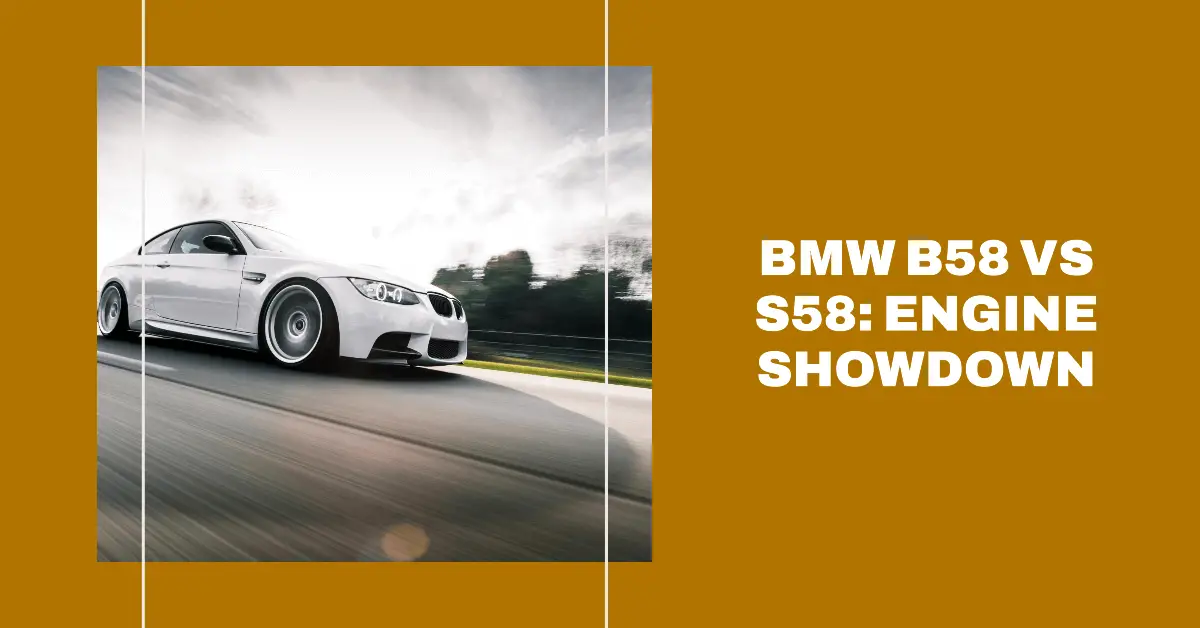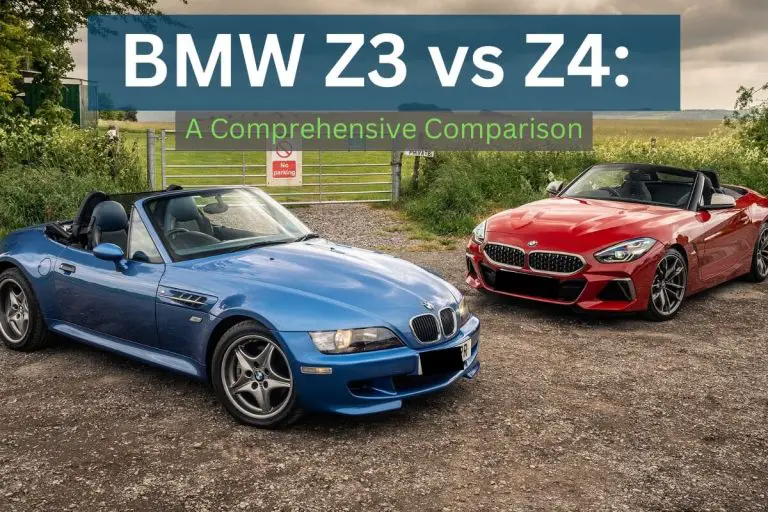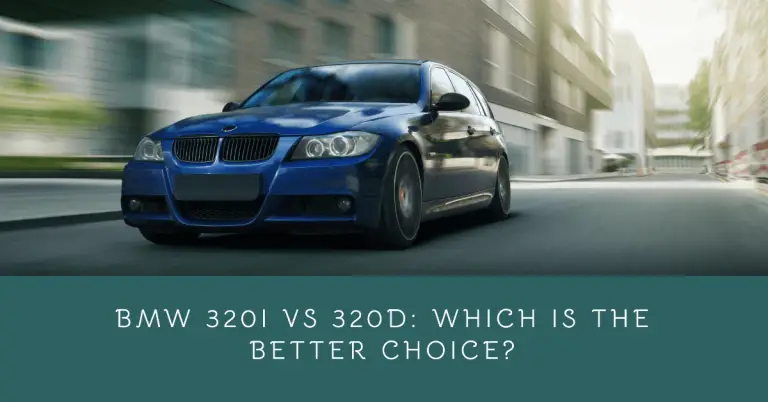Key Differences Between the BMW B58 and S58 Engines
The BMW B58 and S58 are two of the most popular turbocharged inline 6-cylinder engines from the renowned German automaker. But what exactly sets these powerplants apart?
This 3,000+ word guide will compare and contrast the B58 and S58 across design, performance, specs, and real-world applications so you can fully understand the evolution of BMW’s iconic 3.0 liter turbocharged I6.
The B58 is the older motor and S58 is the latest high-performance version. The S58 makes more power and torque throughout the rev range thanks to upgrades like stronger internals, direct injection, and advanced turbocharging.
Read on to learn everything potential buyers, tuners, and enthusiasts need to know about the formidable BMW B58 vs the even mightier S58.
Detailed Engine Specs and Design
First let’s examine the origins and design of the B58 and how the S58 improves upon its predecessor:
The BMW B58 3.0L Turbo Engine
The B58 debuted in 2015 as the replacement for BMW’s beloved N55 turbo inline 6. It uses a closed-deck block design along with direct fuel injection, variable valve lift, and variable camshaft timing.
Configuring the B58 as an inline 6-cylinder provides inherent smoothness and balance. The 3.0 liter displacement strikes a perfect balance for street performance.
This robust turbocharged engine reliably delivers 320 to 360 horsepower depending on the application. Peak torque ranges from 330 lb-ft in the 340i to 369 lb-ft in the Z4 roadster.
Evolution to the BMW S58 with More Power
Unveiled in 2017 for the F90-gen M3 and M4, the S58 builds on the B58’s stout foundation then turns everything up to 11.
Output jumps to a prodigious 503 horsepower and 479 lb-ft of torque in the Competition models. This huge bump comes courtesy of:
- Enlarged twin-scroll turbos with higher boost pressures
- Sturdier forged crankshaft
- Upgraded cooling and lubrication systems
- Port and direct fuel injection for improved cylinder filling
- Revised exhaust manifold and intake
- Strengthened pistons, rods, head gasket
- Variable cam timing and Valvetronic lift
These extensive upgrades transform the B58 into the highest performing factory inline 6 BMW has ever produced. Let’s explore the S58’s enhanced engine internals and architecture further.
Engine Configurations: 3.0L Straight-6 with Twin Turbos
Both the B58 and S58 utilize a 3.0 liter inline 6-cylinder orientation with a twin-scroll turbocharger setup. Some key traits of this tried-and-true engine layout:
- Naturally balanced design that is inherently smooth
- Inline configuration fits well in engine bays
- Reduced weight vs a V6 or V8 motor
- Twin-scroll turbos spool faster with less turbo lag
The S58 adds reinforced internals to handle the increased pressures and heat of forced induction:
- Forged crankshaft is stronger than B58’s cast piece
- Pistons feature reduced skirts and thicker crowns
- Connecting rods have increased tensile strength
- Cylinder head gasket handles higher combustion forces
These fortified components help the S58 produce way more power reliably and safely.
Direct Injection, Valvetrain, and Turbocharging
Let’s compare some key performance features:
Fuel Injection
- B58 has direct injection only
- S58 adds port injection for improved fuel atomization
Valvetrain
- DOHC 24 valve setup with Valvetronic variable lift
- Allows high rpm operation with precise control
Turbos
- Both use two low-inertia twin-scroll turbos
- S58 turbos are increased to 11.6 psi max boost
- Enlarged intercooler on S58 reduces intake temps
Strengths:
- Excellent throttle response from twin turbos
- Broad power band maintained to redline
- Low and midrange grunt supported by port injection
- High output fostered by direct injection and Valvetrain
BMW pulls out all the stops with the S58 to create an engine that screaming to 8600 rpm yet still delivers immediate off-boost response.
Displacement and Cylinder Layout
Some fast facts on the B58 and S58 engine designs:
- 3.0 liter (2,993 cc) displacement
- Inline 6-cylinder orientation
- Closed-deck block with aluminum alloy construction
- 85mm bore, 94.6mm stroke
- Compression ratio: 11.0:1 on B58, 10.2:1 on S58
- Cylinder numbering order: 6-5-4-3-2-1
The 3.0L size strikes a perfect balance for street cars. It provides effortless low end torque yet still revs freely to take advantage of the BMW’s famous top-end rush.
Peak Horsepower and Torque Outputs
Now let’s compare the max horsepower and torque ratings for the B58 versus the S58 powerplants.
BMW B58 Horsepower
- 320 hp in 540i
- 330 hp in 340i
- 335 hp in 440i
- 360 hp in Z4 roadster and Toyota Supra
BMW S58 Horsepower
- 473 hp in M3 and M4
- 503 hp in M3 and M4 Competition
- 617 hp in M4 GTS track special
BMW B58 Torque
- 330 lb-ft in 340i
- 332 lb-ft in 440i
- 369 lb-ft in Z4 and Supra
BMW S58 Torque
- 406 lb-ft in M3/M4
- 479 lb-ft in Competition models
- 553 lb-ft in GTS
The S58’s 90+ horsepower advantage comes courtesy of its more aggressive turbocharging, fuel delivery, and forged internals. An immense peak torque of 479 lb-ft at just 2750 rpm demonstrates how the S58 offers both top end power and incredible drivability.
Performance and Power Delivery Characteristics
Now let’s explore how these impressive power and torque numbers translate to real-world performance.
Turbo Response and Spool Time
The B58 and S58 both use twin-scroll turbos for lightning-fast spool times. Boost hits early at just 1500 rpm in the S58 M3/M4 models.
Power Delivery
Low-end: Immense torque from the get-go thanks to the turbos and direct/port injection. This allows 0-60 times under 4 seconds despite the large engine size.
Mid-range: A deep well of power from 3000 to 5000 rpm lets you rocket out of corners or cruise with authority.
Top end: Free-spinning all the way to 7200 rpm on the B58 and 8600 rpm on the S58. This high-revving nature gives BMW’s signature rush to redline.
Sound
The B58 has a pleasing if somewhat muted exhaust note. The S58 unleashes a snarling, aggressive sound befitting its performance roots. It barks, growls, and wails through its dual exhaust system.
Tuning Potential
Both platforms respond extremely well to mods and tuning thanks to their robust designs. The S58 can safely handle more boost and its beefed up components give it greater performance headroom when pushed hard.
Cars Equipped with the B58 and S58 Engines
Here are some of the most popular vehicles powered by BMW’s B58 and S58 engines:
B58 Applications
- 340i, 440i, 540i sedans
- X3 M40i, X4 M40i, X5 40i SUVs
- Z4 M40i roadster
- Toyota Supra 3.0
- Alpina B3, B4, B5
S58 Applications
- M3 sedan, M4 coupe
- X3 M, X4 M, X5 M, X6 M SUVs
- M2 CS coupe
- Alpina B3, B4, XB7
- Limited production models like M4 GTS
The B58 slots in as the higher performance option for BMW’s core 3, 4, and 5 Series lineup along with their SUV counterparts.
The M-tuned S58 transforms BMW’s M division models into track-capable beasts while retaining daily drivability. Even SUVs like the X3M and X5M post supercar rivalling acceleration times thanks to this magnificent motor.
Conclusion: The S58 Perfects the Winning B58 Formula
When it comes to comparing the BMW B58 vs S58, the S58 is clearly the more powerful, capable engine that demonstrates tangible improvements over its formidable predecessor.
It pairs all of the B58’s well-rounded performance characteristics with enhanced outputs across the board. Forged components, an overhauled fueling system, and upgraded turbos transform this 3.0L turbo straight 6 into an absolute masterpiece.
While the B58 remains a satisfying option for drivers focused on smooth power delivery and real-world drivability, the S58 is purpose-built for extreme capabilities. It provides superbike power levels in a luxury package, proving BMW still reigns supreme when it comes to elite inline 6 engines.







